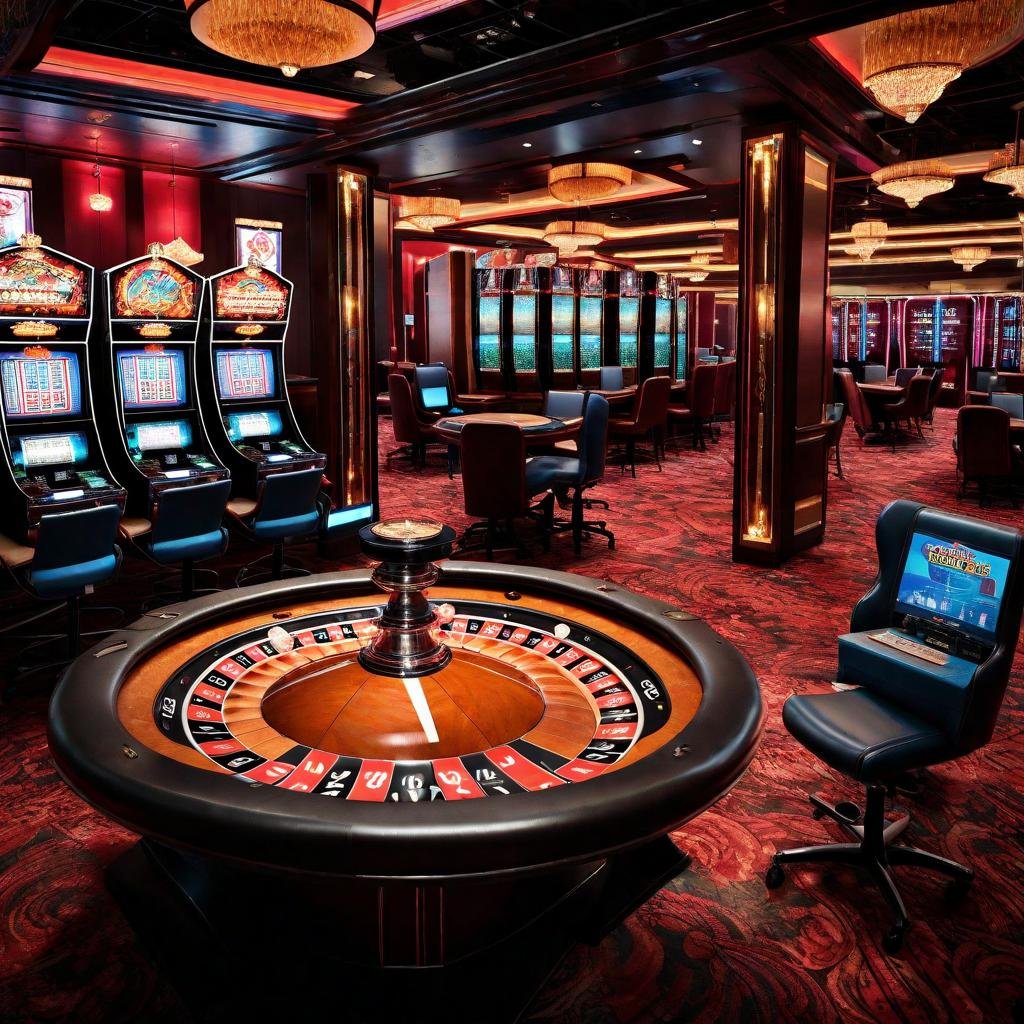The manner in which Gaming Establishments Use Shade and Style to Draw Players

Within the lively and stimulating world of gaming establishments, where fortune and strategy intertwine, color and design play a pivotal role in drawing in players. From the moment visitors step inside a casino or log into a gaming website, they are immersed in a sightly feast that grabs their attention and entices them to discover more. Vivid colors, engaging graphics, and creative layouts are meticulously crafted to create an environment of excitement and anticipation, ultimately enhancing the gaming experience.
While players move through the ever-changing landscape of casino games, they encounter a variety of designs that not only serve visual purposes but also affect feelings and choices. Colors like scarlet and yellow symbolize wealth and fortune, while calm navy and emeralds can create a much tranquil environment. Grasping how these elements function together allows casinos to create an inviting and stimulating atmosphere that encourages players to interact with the games, invest additional time at the tables, and increase their overall enjoyment.
The Psychology of Color in Casino Games
Color plays a key role in the development of gaming experiences, influencing players' emotional states and behaviors. Lively and vibrant hues, such as red and amber, are often used to ignite thrill and draw attention. These shades create a feeling urgency and dynamism, encouraging gamblers to participate more eagerly with the experience. By intentionally selecting colors, developers aim to evoke emotions of pleasure and excitement, which can enhance the complete game experience.
Different colors also have psychological associations that can influence how players perceive their odds of success. For instance, green is often associated with good fortune and prosperity, making it a popular choice in games like the roulette wheel and poker setups. This link can result players to feel more optimistic and confident in their gaming, ultimately inspiring them to wager more. Understanding these associations allows game developers to design environments that enhance player satisfaction and engagement.
Moreover, the layout of gambling game interfaces often uses blended colors and opposing colors to direct players' responses. For instance, successful combinations may be highlighted with vivid, contrasting shades, creating a visual cue. This technique supports positive outcomes and promotes repeated participation. By utilizing the science of color, gaming venues can design games that not only captivate participants but also hold them involved and committed in their play experience.
Creative Features that Attract Players
The visual appeal of casino games is largely influenced by the use of vibrant colors. i win Bright and striking colors are strategically chosen to create an appealing atmosphere that captures interest. For example, crimson and golds often signify luck and prosperity, which is why they are prevalent in the color schemes of slot machines and game surfaces. These colors not only draw players in, but they also evoke emotions related to thrill and expectation, enhancing the total gaming experience.
In addition to color, the design and layout of gambling games play a crucial role in player attraction. Games are designed to be user-friendly, ensuring that players can easily understand the rules and mechanics. User-friendly interfaces, along with engaging graphics and motion, help maintain gamer interest and encourage longer play sessions. The tactile elements, such as the texture of the controls and the audio of the games, also contribute to a comprehensive sensory experience that keeps players engaged.
In conclusion, conceptual elements in game design can greatly influence player choice. Many casino games are inspired by media, myths, or exploration motifs, featuring symbols and characters that resonate with players. These themes create a sense of engagement and connection, making each game feel unique. When players feel a bond to the theme, they are more likely to opt for that game over others, leading to increased participation and enthusiasm within the casino environment.
Case Studies: Notable Casino Table Game Designs
One noteworthy example of impressive gambling game design is the well-known slot machine series based around popular movies. Games such as those based on the The Wizard of Oz and Game of Thrones utilize dynamic colors and high-quality graphics to engage players in familiar narratives. The employment of moving visuals and captivating sound effects captures the attention of players, building an affective connection to the theme. This tactic not only promotes longer play but also improves the overall gaming experience, resulting in increased player retention.
Another effective case is the application of the psychology of color in table games like 21 and roulette. Casinos often create these games with dark reds and greens, colors traditionally connected with luck and wealth. For instance, the emerald felt on a blackjack table provides a soothing effect, while the crimson accents in the wheel invite excitement. This thoughtful use of color helps to establish an inviting atmosphere that encourages players to join in, fulfilling their psychological impulses and increasing their enjoyment.
Finally, social casino games that incorporate social features and vivid, colorful designs have seen remarkable success in engaging players. Games like Zynga's Poker and Slot-O-Mania leverage bright colors and playful animations to create an inviting online environment. The inclusion of leaderboards, community sharing options, and in-game rewards promotes competition and community, pulling players in for longer sessions. Such designs not just make the games visually enticing but also highlight social interaction, a crucial factor in player retention and engagement within online casino environments.
